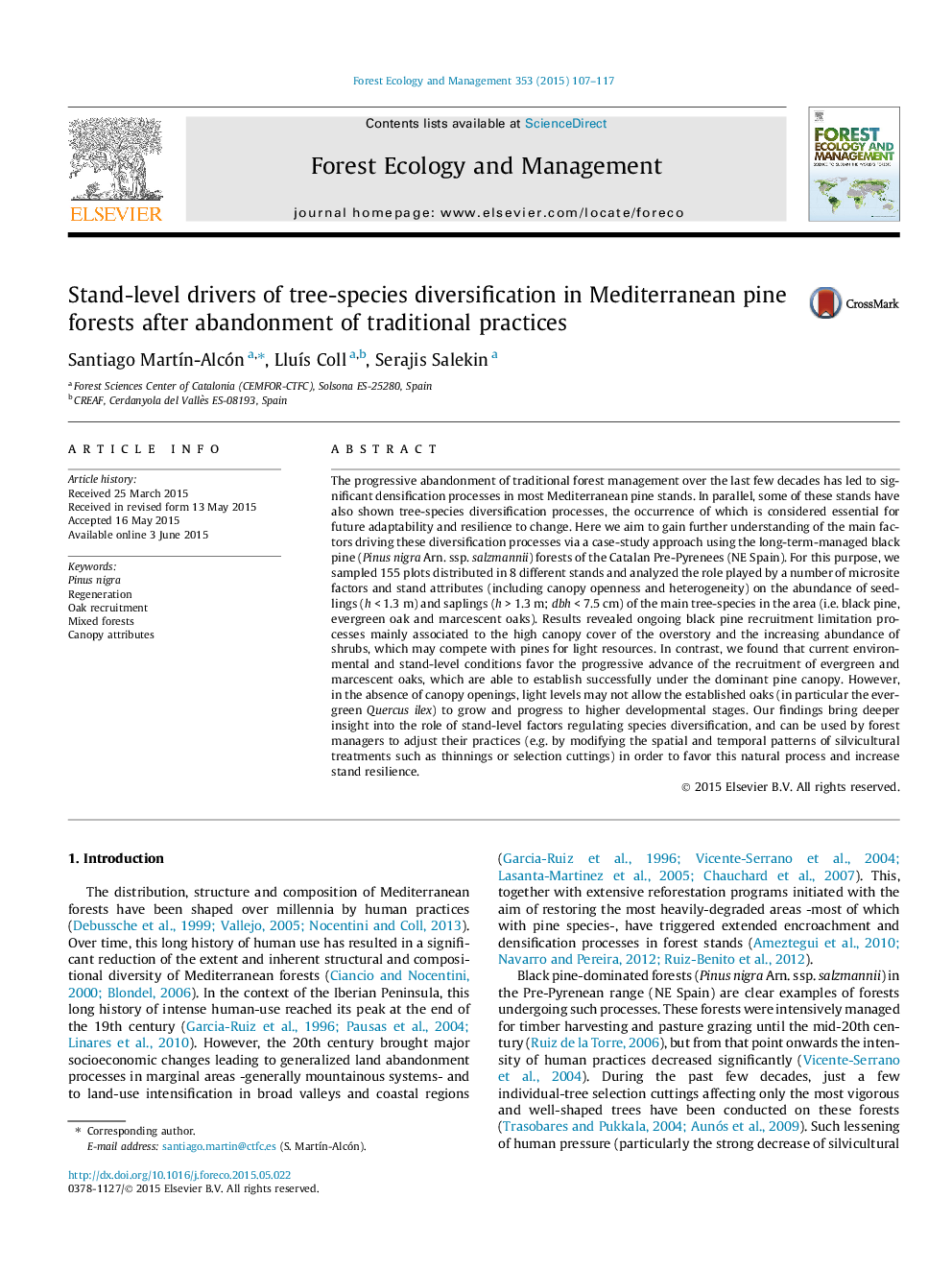| کد مقاله | کد نشریه | سال انتشار | مقاله انگلیسی | نسخه تمام متن |
|---|---|---|---|---|
| 86223 | 159172 | 2015 | 11 صفحه PDF | دانلود رایگان |
• Long-term-managed pine stands are currently undergoing diversification processes.
• Stand-level forest attributes play a key role on tree species diversification.
• High canopy closure and shrub abundance cause black pine recruitment limitation.
• The stand conditions limiting pine recruitment favor the establishment of oaks.
• Canopy openings are needed to allow oak recruits reaching more advanced stages.
The progressive abandonment of traditional forest management over the last few decades has led to significant densification processes in most Mediterranean pine stands. In parallel, some of these stands have also shown tree-species diversification processes, the occurrence of which is considered essential for future adaptability and resilience to change. Here we aim to gain further understanding of the main factors driving these diversification processes via a case-study approach using the long-term-managed black pine (Pinus nigra Arn. ssp. salzmannii) forests of the Catalan Pre-Pyrenees (NE Spain). For this purpose, we sampled 155 plots distributed in 8 different stands and analyzed the role played by a number of microsite factors and stand attributes (including canopy openness and heterogeneity) on the abundance of seedlings (h < 1.3 m) and saplings (h > 1.3 m; dbh < 7.5 cm) of the main tree-species in the area (i.e. black pine, evergreen oak and marcescent oaks). Results revealed ongoing black pine recruitment limitation processes mainly associated to the high canopy cover of the overstory and the increasing abundance of shrubs, which may compete with pines for light resources. In contrast, we found that current environmental and stand-level conditions favor the progressive advance of the recruitment of evergreen and marcescent oaks, which are able to establish successfully under the dominant pine canopy. However, in the absence of canopy openings, light levels may not allow the established oaks (in particular the evergreen Quercus ilex) to grow and progress to higher developmental stages. Our findings bring deeper insight into the role of stand-level factors regulating species diversification, and can be used by forest managers to adjust their practices (e.g. by modifying the spatial and temporal patterns of silvicultural treatments such as thinnings or selection cuttings) in order to favor this natural process and increase stand resilience.
Journal: Forest Ecology and Management - Volume 353, 1 October 2015, Pages 107–117
